As traders reassess the market demand in the United States, the demand is expected to be larger than previously forecasted, and in addition, the total amount of market supply in February has been significantly reduced. Therefore, the international urea market conditions improved slightly in March, and the price of foreign urea in March changed little. On Thursday, the urea futures FOB price was close to $380. The offshore Arabian Gulf net price is stable at between 395 and 410 US dollars. The prices of urea in Yuzhnyi and Arabian Gulf have been relatively stable recently. In March, the market supply and demand are relatively balanced. If the new production line is put into operation as planned, the market will shift to oversupply in April. Most of the sources for February have been sold. No deal has yet been able to probe the price in March because many manufacturers do not want to start negotiating future prices now. The urea CIF sold to Mexico last week was less than US$400, but it seems to be a previously signed contract. In the absence of current purchases from buyers, the CIS manufacturers seem to accept a slight decline in prices, but traders do not want prices to fall, so even if prices fall in the future, the speed and decline will be moderate.
Last week, except for some small batches of urea ammonium nitrate solution and large grain urea, there was almost no other transaction in the international market. The large-grain urea FOB for these transactions was US$440, which was a US$2 increase over the previous week. In the second half of this month, Russia and Ukraine will sell to Latin America and Turkey. At that time, the transaction price will show the overall price trend in March.
Supplier is not in a hurry to sell
In the Black Sea region, offshore quotations from Ukrainian suppliers of Ukrainian urea from two Russian suppliers were firm at $380 in March. The February supply was sold out and no deal was reached last week. The trader’s tender FOB price was less than US$370. Azot's large-scale ammonia plant restarted on February 9 after 6 to 7 days of production stoppage, and lost 17,000 tons of urea production. NF2 monthly urea has been sold out. The supply in March was 180,000 tons. At this time, the conventional supply was 200,000 tons, and 115,000 tons of small-particle urea in March was sold to Ethiopia and traders.
The two ports of the Baltic Sea were affected by the freezing of freight rates. The manufacturer's intentional FOB price is between 365 and 375 US dollars, but the buyer's bid is 350 US dollars FOB St Petersburg Port. The transaction with the European market FOB is 365 to 370 US dollars. Last week, traders quoted urea-to-shore prices for Mexican buyers at around US$400, and the Baltic Sea FOB price was US$355-360, but there was no transaction.
The number of Middle East producers has been sold out in February, so spot trading is slow, and the Asian market has not started purchasing urea in March. Iranian urea is competing with Middle East sources in Latin America and Africa. The Nordic and Mediterranean markets have a large demand for spot urea in Egypt in February, so producers will not accept the FOB price below US$440 at present and will start the price negotiations in March next week.
Importing country procurement has not yet begun
In the U.S. market where demand has dropped significantly, some price support factors have recently emerged. During the recent meeting of the US Fertilizer Institute (TFI), everyone was optimistic about the amount of fertilizer used in spring. The price of large granule urea in New Orleans rebounded by 15 US dollars per short ton, and FOB prices rose back to 405 US dollars. A large trader said that the spring urea supply gap in the US market will reach 500,000 tons, but this possibility seems unlikely.
In the Asian demand market, due to the increase in fertilizer subsidies, the Indian government is seeking more funds. Local media reported that the final subsidy will increase to 20 billion U.S. dollars and urea will enjoy 500 million U.S. dollars. Thailand's import of large-particle urea in February was still lower than US$420. Suppliers are prepared to accept this price level to maintain market share. In January, Vietnam’s urea imports fell to 4,591 tons, the lowest level in years. The country’s import volume in January 2011 was 30,200 tons. The decrease in imports was due to the decrease in demand in Vietnam’s domestic market and the unavailability of China’s urea that was exported to the Vietnamese market in December last year. The Philippine importer purchased 6,000 tons of small-sized bagged urea from Vietnam Petroleum Company last week at a price of 450 U.S. dollars, which is also the seller’s offer.
Fluorescence Spectrometer
Fluorescence spectrum can provide excitation spectrum, emission spectrum, fluorescence intensity, quantum yield, fluorescence lifetime, fluorescence polarization and other more physical parameters. These parameters reflect various features of the molecules , and through which can obtain more information of the tested molecular. CNI launched fluorescence Spectrometer with the characteristics of rapid analysis and accurate measurement, is usually used in crystal, rare earth elements and other fluorescence spectrum detection. Fluorescence spectrum analysis and measurement is special in high sensitivity, strong selectivity, micro samples, simple operation, etc.
â– Composition of Fluorescence Spectrometer

|
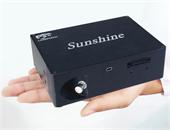
|
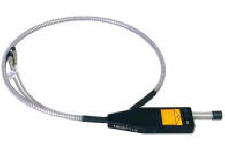
|
|
Laser Source
|
Fiber Optic Spectrometer
|
Probe
|
|
A variety of linewidth options at :
257, 360, 405, 473, 514.5, 532, 633, 660,
785, 830, 980, 1064 nm
|
High sensitivity;
Up to 80% quantum efficiency;
Spectral range 200- 1100nm
|
Excitation wavelength;
360, 405, 532, 785, 830 nm...
|
â– Fluorescence Spectrometer Solution

|
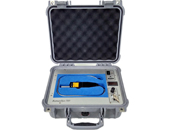
|
|
Combined Fluorescence Spectrum System
|
Portable Fluroescence Spectrometer
|
|
Fast connection, flexuble operation.
Wavelength is optional according on
Customer`s acyual requirements.
|
Simple measurement and easy operation,
extemal power supply vehicle- mounted charger,
Dustproof, anti- vibration, arti-glare interference...
|
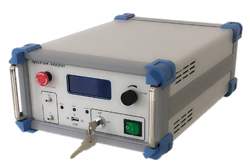
|
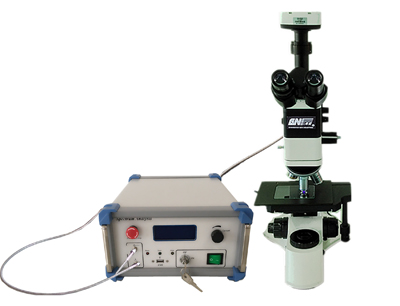
|
|
Desktop Raman Flurocence Spectrometer
|
Micro Flurocence Spectrum Measurement System
|
|
Build- in narrow line width laser- power
adjustable, high sensitivity spectrometer-
used for weak signal detection
|
It combines micro system and Raman
system which greatly tacilitates the Raman
micro area detection
|
â– Sample Fluorescence Spectrum

Combined Fluorescence Analyzer,Atomic Fluorescence Spectrometer,Fluorescence Spectrometer,X Ray Fluorescence Spectrometer
Changchun New Industries Optoelectronics Technology Co., Ltd. , https://www.cnioptics.com







